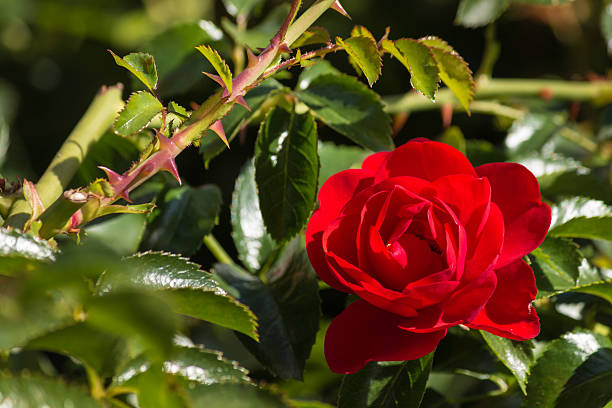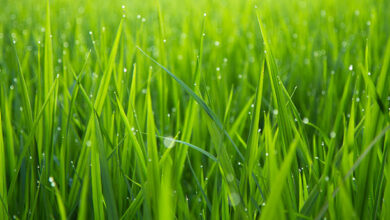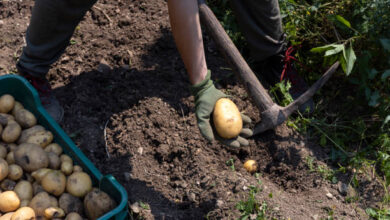
Prickly Plant Parts: A Comprehensive Lesson
Ever brushed up against a plant only to feel a sharp sting or poke? That’s the work of prickly plant parts! These fascinating structures are more than just a nuisance; they play critical roles in plant survival and adaptation. In this comprehensive guide, we’ll explore different types of prickly plant parts, their functions, and how to handle them safely. By the end, you’ll gain a deeper appreciation for these spiky features and learn how to interact with them safely in your garden or nature walks.
Types of Prickly Plant Parts
Thorns
Thorns are modified branches or stems that are sharp and rigid. They often serve as a defense mechanism to protect plants from herbivores. For example, the rose plant is well-known for its thorns, which can deter animals from nibbling on its leaves and flowers. Unlike other prickly structures, thorns are true stems that have evolved specifically to provide protection.
Spines
Spines are another type of prickly plant part, but unlike thorns, they are modified leaves or parts of leaves. They are typically found in plants like cacti and holly. Spines serve multiple functions, including protection from herbivores and reducing water loss. In arid environments, spines can help cacti conserve moisture by minimizing surface area and reducing water evaporation.
Prickles
Prickles are small, sharp outgrowths on the surface of the plant, often found on plants like blackberries and raspberries. Unlike thorns and spines, prickles are not derived from modified stems or leaves but are extensions of the plant’s epidermis. They provide protection and can also help the plant cling to surfaces or deter animals from eating the fruit.
Functions of Prickly Plant Parts
Defense Mechanisms
Prickly parts are primarily evolved for defense. Thorns, spines, and prickles act as physical deterrents to herbivores, reducing the likelihood of plant predation. This evolutionary adaptation helps plants survive and reproduce by preventing damage from animals that might otherwise consume or damage them.
Environmental Adaptations
In addition to defense, prickly structures help plants adapt to their environments. For instance, cacti with their spines are well-suited to desert environments where water conservation is crucial. The spines reduce water loss by limiting exposure to the sun and decreasing the surface area from which moisture can evaporate. Similarly, prickles on climbing plants like blackberries assist in climbing and securing themselves to other structures for better light exposure.
Reproduction and Growth
Some prickly parts play a role in plant reproduction and growth. For example, the spines on certain plants can aid in seed dispersal by attaching to the fur of animals or the feathers of birds. This helps the plant spread its seeds over a larger area, increasing its chances of successful reproduction.
How to Handle Prickly Plants Safely
Identifying Prickly Plants
Knowing how to identify prickly plants is essential for safe interaction. Look for distinguishing features such as sharp outgrowths or spiky surfaces. Common prickly plants include roses (with thorns), cacti (with spines), and blackberries (with prickles). Understanding these characteristics helps you avoid accidental injuries.
Proper Handling Techniques
When handling prickly plants, wear protective gloves and long sleeves to minimize direct contact with the plant’s sharp parts. Use appropriate gardening tools, such as pruners with long handles, to manage or trim prickly plants safely. For plants with particularly aggressive spines or thorns, consider using specialized tools or seeking professional assistance.
First Aid for Prickly Plant Injuries
If you do get injured by a prickly plant, it’s important to treat the wound properly. Clean the area with soap and water to prevent infection. For minor injuries, apply an antiseptic and cover with a clean bandage. If the injury is severe or if a thorn or spine is embedded deeply, seek medical attention to ensure proper removal and treatment.
YOU MAY LOVE TO READ
Mastering Structure Planting for a Stunning Garden
Kokedama Plants: Everything You Need To Know
Spider Legs: All You Need To Know
Unique Examples and Interesting Facts
Unusual Prickly Plants
Some prickly plants are particularly remarkable for their unique adaptations. The Madagascar periwinkle, for example, has needle-like prickles that provide both protection and support. The thorny Devil’s club, native to the Pacific Northwest, features large, formidable thorns that serve as a defense against herbivores and can deter even the most persistent foragers.
Prickly Plants in Culture and History
Prickly plants have held cultural and historical significance throughout various societies. In some cultures, thorns have been used symbolically, such as the crown of thorns in Christian iconography. Historically, prickly plants have also been used in traditional medicine for their purported healing properties, though these uses should be approached with caution and verified through scientific research.
Conclusion
Pickly plant parts—thorns, spines, and prickles—are fascinating examples of nature’s adaptations. They play crucial roles in plant defense, environmental adaptation, and even reproduction. By understanding these structures and learning how to handle them safely, you can better appreciate the complexity and beauty of the plant world.
Have you encountered prickly plants in your garden or on your hikes? Share your experiences or ask questions about handling prickly plants in the comments below. We’d love to hear about your encounters with these spiky wonders!




